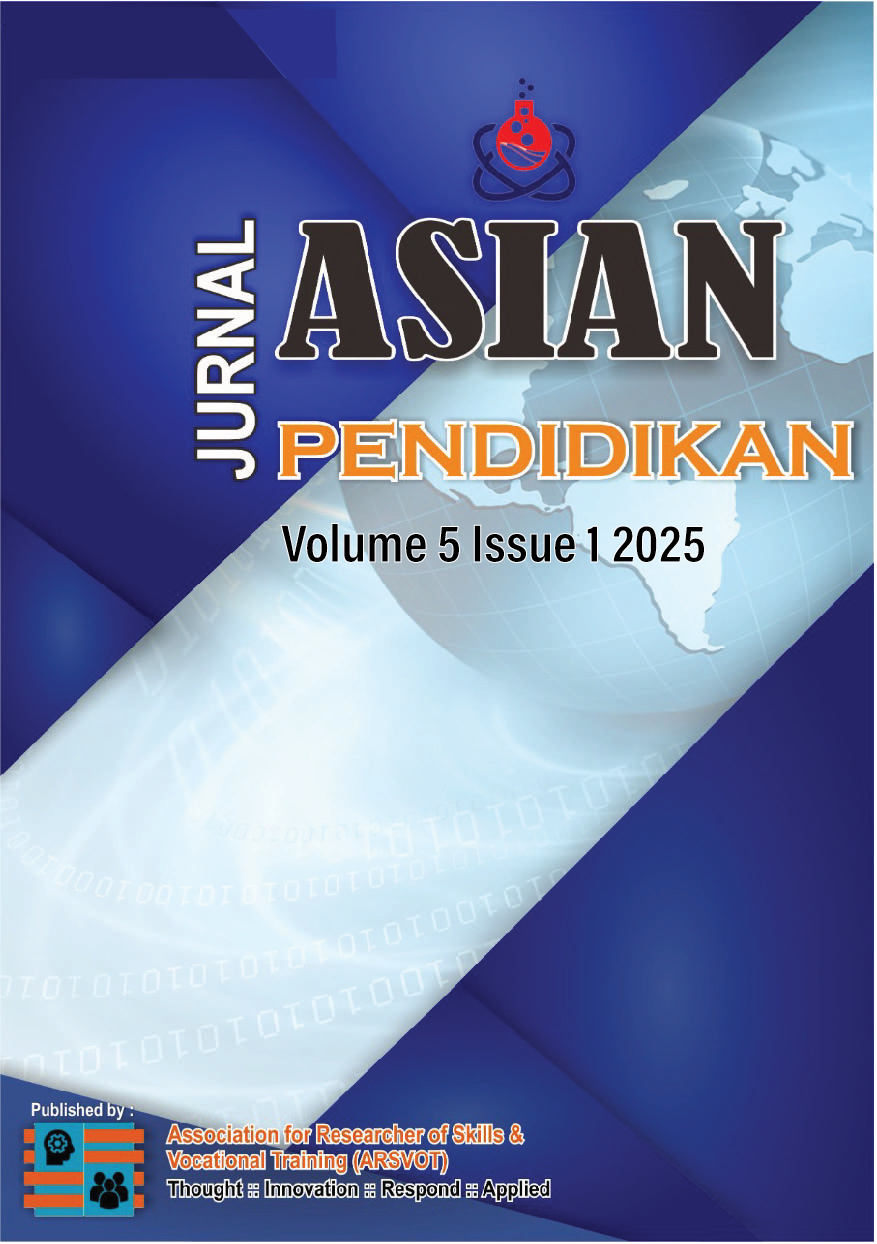A Comparative Literature Review of Native and Non-Native English-Speaking Teachers’ Characteristics in English Language Classroom
DOI:
https://doi.org/10.53797/aspen.v5i1.3.2025Keywords:
English Language Teaching (ELT), Native English-Speaking Teachers (NEST), Non-native English Teachers (NNEST), recruitment, experiences, error, bilingualAbstract
This literature review focuses on the characteristics of native and non-native English-speaking teachers in English language classrooms. The study seeks to identify the differences between native and non-native English teachers in teaching English language classrooms. A total of 16 articles were reviewed and analysed using the AntConc program to analyse patterns and frequencies of the terms in the articles. Comparisons on native and non-native English-speaking teachers’ beliefs, teaching practice and proficiency were made to gain a deeper understanding of their roles and effectiveness in English language classroom.
Downloads
References
Chakma, U. (2020). Fitting in and fighting out. Exchanges: The interdisciplinary research journal, 8(1), 19–39. https://doi.org/10.31273/eirj.v8i1.602
Chomsky, N. (1965). Aspects of the theory of syntax, vol. 16, Massachusetts, USA: MIT Press, 393.
Deng L, Zhang L.J and Mohamed N (2023) Exploring native and non-native English speaker teachers’ perceptions of English teacher qualities and their students’ responses. Front. Psychol. 14:1175379. doi: 10.3389/fpsyg.2023.1175379
Fatahillah, B. F., Mistar, J., & Ismiatun, F. (2024) The challenges and strategies faced by native and non-native teachers teaching in an ESL context: A Case Study. Jurnal Penelitian, Pendidikan, dan Pembelajaran, 19(19).
Fauzi, N. M.; Hashim, H. (2020). Apple vs. Mangosteen: A qualitative study of students' perception towards native and non-native English-speaking teachers. Journal of Education and e-Learning Research, 7(2): 218-228. DOI: 10.20448/journal.509.2020.72.218.228
Fitria, T. N. (2023). The issue of native and non-native English-speaking teachers: Which is the ideal English teacher. Issues in applied linguistics & language teaching, 5(1). 48-58.
Ghafar, Z. N. (2023). The teacher-centred and the student-centred: A comparison of two approaches. International Journal of Arts and Humanities (IJAH), 1(1), 18-23.
Ghane, Mohammad Hossein, Razmi, Mohammad Hasan (2023). Exploring the effectiveness of native and non-native English teachers on EFL learners’ accuracy, fluency, and complexity in speaking, Education Research International.
Ishchenko, Y., Vdovenko, О., Nych, T., Moroz-Rekotova, L., & Arystova, L. (2022). Effectiveness Of Distance Learning in Higher Educational Institutions under Martial Law. Apuntes Universitarios, 13(1),348-364. https://doi.org/10.17162/au.v13i1.1332
Ismiyani, N. (2021) The future of nonnative teachers of English. Edukatif: Jurnal Ilmu Pendidikan, 3(6). 4532-4540. https://doi.org/10.31004/edukatif.v3i6.1243
Judd, S. J. D., Henrichsen, L. E., Eckstein, G. T., McMurry, B. L. (2021). Malaysian English teacher morale and the presence of expatriate English teachers. Asian Journal of English Language Teaching, 30, 33-59
Kiczkowiak, M. (2020). Recruiters’ attitudes to hiring ‘native’ and ‘non-native speaker’ teachers: An international survey. TESL-EJ, 24(1), 1–22.
Llurda, E., & Calvet-Terré, J. (2024). Native-speakerism and non-native Second Language Teachers: A Research Agenda. Language Teaching, 57(2), 229–245. doi:10.1017/S0261444822000271
Ministry of Education. (2013). Malaysian Education Blueprint 2013–2025 (Preschool to post-Secondary education).
Ministry of Education (2015). English language education reform in Malaysia: The Roadmap 2015-2025.
Rasyid, F., Seraj, P. M. I. S., Ghofur, A., Asrifan, A. (2023) Students’ perception toward teaching strategies of native and nonnative English-speaking teachers: A case study in Indonesia. Hindawi: Education Research International, (2023). https://doi.org/10.1155/2023/7827917
Rose, H., McKinley, J., & Galloway, N. (2021). Global Englishes and language teaching: A review of pedagogical research. Language Teaching, 54(2), 157-189. https://doi.org/10.1017/S0261444820000518
Shliakhtina, O., Kyselova, T., Mudra, S., Talalay, Y., & Oleksiienko, A. (2023). The effectiveness of the grammar translation method for learning English in higher education institutions. Revista Eduweb, 17(3), 134-145. https://doi.org/10.46502/issn.1856-7576/2023.17.03.12
Shalihah, I. (2021). Native and non-native English-speaking teachers: Pesantren students’ perceptions in Indonesia. Undergraduate Thesis, Universitas Islam Malang. http://repository.unisma.ac.id/handle/123456789/5630
Solihah, W. (2016) The native speaker programme in Malaysia: Boon or Bane. Jurnal Kemanusiaan, 25(1), 1-11.
Thararuedee, P. & Musigrungsi, S. (2024). Recruiters’ beliefs regarding the employability of native and non-Native English-speaking tertiary-level teachers: The case of public universities in Thailand. Ampersand, 12. https://doi.org/10.1016/j.amper.2024.100172
Wang, L. (Evelyn) & Fang F. (Gabriel) (2020). Native-speakerism policy in English language teaching revisited: Chinese university teachers’ and students’ attitudes towards native and non-native English-speaking teachers. Cogent Education. https://doi.org/10.1080/2331186X.2020.1778374
Wulandari, R. A., Rosnaningish, A. & Sintawati, F. (2021) Students’ perceptions towards native and non-native English speaker teachers. ETERNAL (English Teaching Journal), 12(2), 80-95.
Downloads
Published
How to Cite
Issue
Section
License
Copyright (c) 2025 Beh Kah Vong

This work is licensed under a Creative Commons Attribution-NonCommercial-ShareAlike 4.0 International License.




